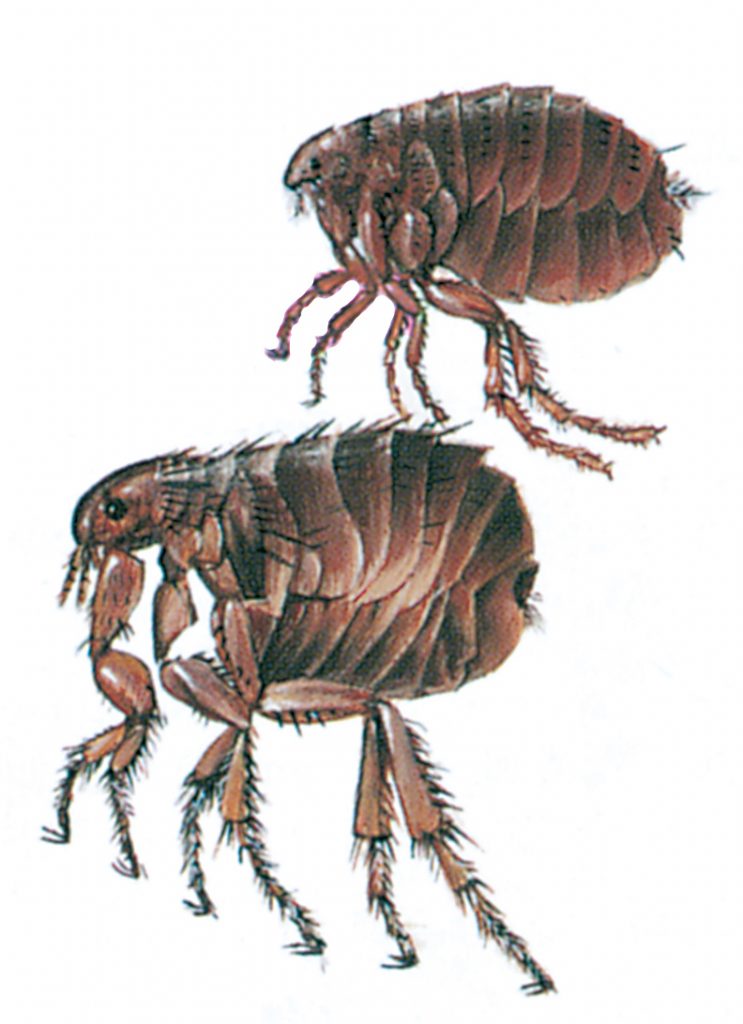( Latin: Order Siphonaptera)
Fleas are extremely well adapted for their special way of life. The hard, tough, chitin exoskeleton makes it almost impossible to squash them and the tall, thin body allows them to move about very rapidly among hairs or feathers. If all else fails, a flea can jump up to about 30 cm.. This may not sound much, but it is more than 200 times the flea’s own body length and is comparable to a man being able to jump about 350 m.
Each individual flea species is more or less dependent upon its own host species, but in many cases it can also suck the blood of other species. Of the 50-60 different species of flea found in Europe, about half occasionally bite humans, but only one species – the human flea – is able to breed on a diet of human blood only.
Flea eggs are smooth, oval and greyish- white. They are about 1/4 mm long, so they can be seen by the naked eye. Unlike louse eggs, they are not attached to hairs but are dropped on the ground and are therefore usually found in the lair or nest of the host. At room temperature they hatch in about 10 days.
The larvae feed on various types of organic matter including the blood containing faeces of the adult fleas. They are white, blind and worm-like and they have a row of bristles on each segment. The duration of development depends largely upon the temperature and may vary from 8 to 150 days.

When fully grown the larva pupates in a cocoon spun from a salivary secretion. The cocoons are normally covered with dust and are therefore difficult to discern. The pupal stage may vary from one week to several months.
The adult fleas may remain in the cocoons for a long time – even for years – waiting until an animal comes near them. Emergence from the cocoons is stimulated by vibration. If an infested house has stood empty for a long time the hungry fleas will start to emerge as soon as the new occupants move in.





